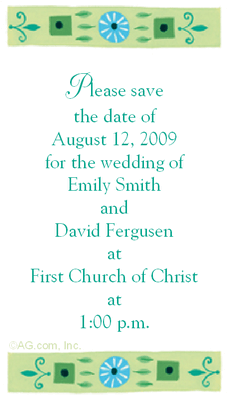
Your personal stationery is as important and as noticed as any clothing accessory—for example, a wristwatch. Most people should own three kinds of personal stationery: formal writing paper (which can be engraved or plain), personal business stationery, and personal notepaper. Household informal stationery is an additional option. You use formal writing paper for writing condolence letters and responding to formal invitations. Do not substitute informal writing paper when formal writing paper is called for.
Personal business stationery is used for matters relating to your career or home life, such as applying for a job or letting the store know that your drapes have not arrived. Use personal notepaper for writing informal invitations and replies, friendly correspondence, thank-you letters—basically for all informal social correspondence. Stationery stores call this kind of item informals. They are generally folded and about 5 by 7 inches in size. The most widely used colors for notepaper are white and offwhite. Folded notes, which are available in pale pink and other pastel colors, are slightly less formal than informals.
If you print household informal stationery, you might choose to include your telephone number for convenience. This fairly impersonal type of stationery is used for notes to vendors, the post office, electric company, and so on. You don’t need to use custom-printed or engraved stationery. Any good stationery store, department store, or jeweler who provides engraving services will also carry plain stationery. Personalizing it is a nice and useful luxury, however. Make sure your stationery meets U.S. postal regulations—that is, envelopes must be at least 31/2 by 5 inches. The Postal Service still allows envelopes with the return address printed on the back, which is a formal social custom. As a general rule, however, printing the return address on the front of the envelope is much more practical if the letter has to be returned to the sender. It is good manners to heed the Postal Service request to put the return address on the front of the envelope for everything but the most formal invitations.
 Half Sheets
Half Sheets

 Letter Sheet
Letter Sheet




